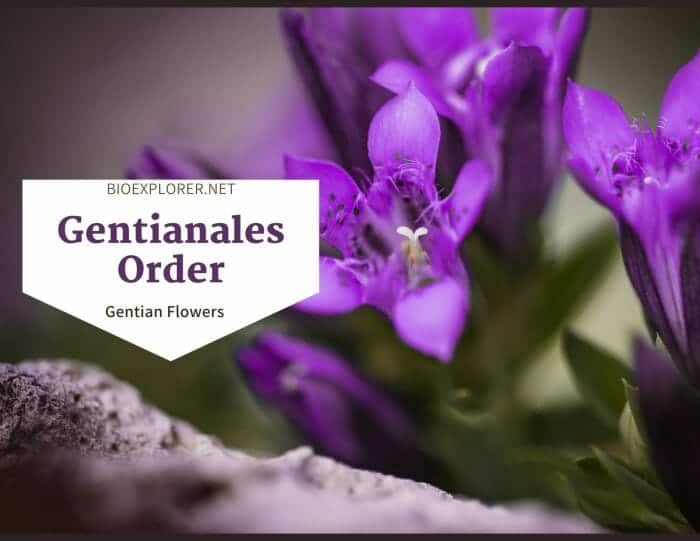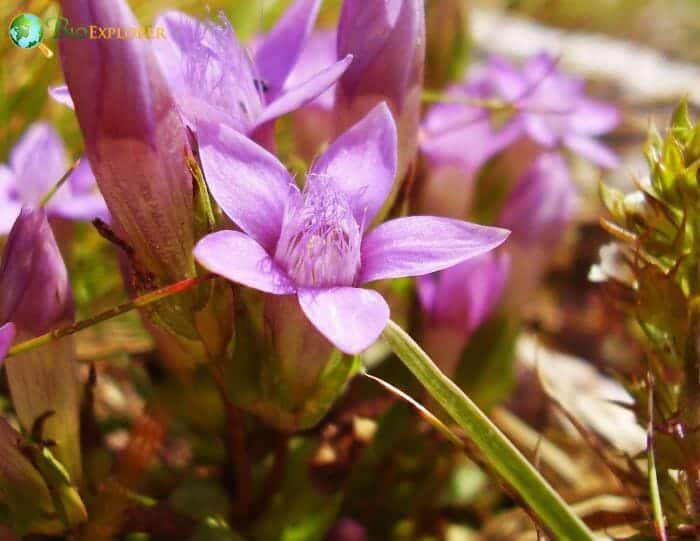The Gentianales (Gentians) is an order of flowering plants involving herbs, shrubs, undershrubs, lianas, and small trees primarily distributed worldwide. Plants of Gentianales mostly have opposite leaves, interpetiolar stipules, bisexual flowers, mostly fused sepals and petals, 4-5 stamens, and 2 carpels. Important species under Gentianales are coffee, periwinkle, oleander, and gentian.
Gentianales Families
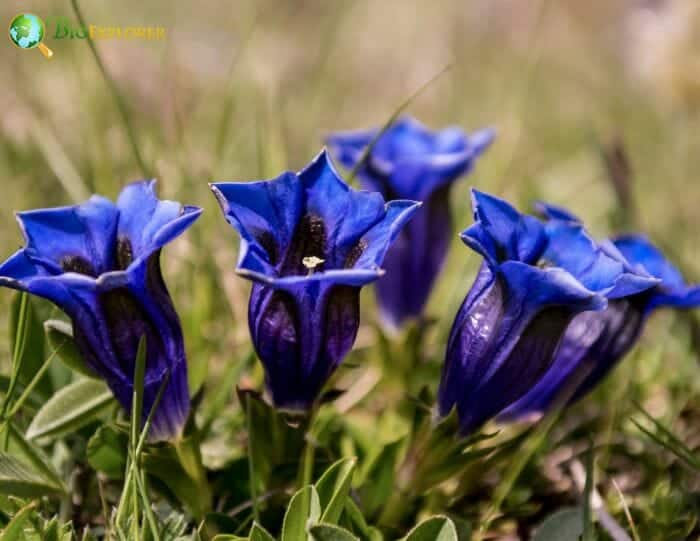
Gentianales is placed under the asterid clade of eudicots and comprises 5 families, 1,121 genera, and 20,145 species.
- Apocynaceae (Dogbane family)
- Gelsemiaceae (Jessamine family)
- Gentianaceae (Gentian family)
- Loganiaceae (Logan plant family).
- Rubiaceae (Coffee family)
Gentianales Distribution
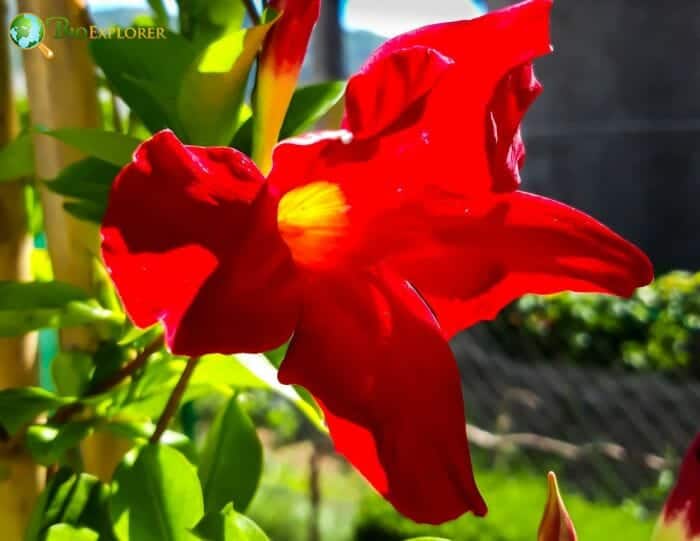
- The Rubiaceae plants (614 genera and 13, 465 species) are distributed worldwide. However, most species are found in the tropical, especially Madagascar and the Andes.
- Gentianaceae family with 102 genera and 1, 750 species are also found worldwide. Half of the genera of Gentianaceae are found in South America.
- The members of the family Apocynaceae (5 subfamilies, approximately 25 tribes, 400 genera, and 4, 555 species) are mainly tropical to warm temperate in distribution.
- The species of Longaniaceae (13 genera and 420 species)[1] have a pantropical distribution.
- Most are found in Australia and New Caledonia. The distribution of the family Gelsemiaceae (3 genera and 11 species) is pantropical.
Gentianales Characteristics
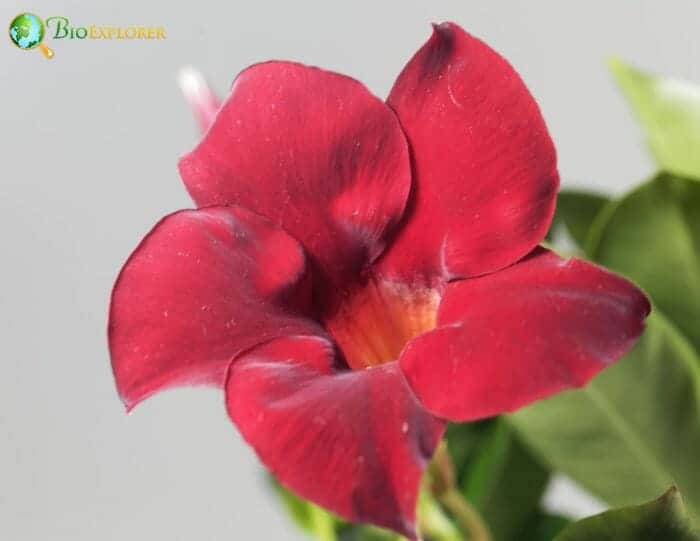
- Plant type: The plants of Gentianales are herbs, shrubs, undershrubs, lianas, and small trees.
- Stem: The stems are ascending, erect, or twining. Some plants have stems that function for photosynthesis (Loganiaceae). The herbs of Rubiaceae mostly have tetragonous, knotted stems.
- Leaves: Most of the members have opposite leaves. Some species have whorled and rarely alternate. The leaves are simple, and the edges are typically entire. The bases of the leaves are connately connected to the stem. Most plants have interpetiolar stipules if present.
- Flowers and inflorescences: The flowers are actinomorphicWhat is actinomorphic?A characteristic of the flower exhibiting radial symmetry such as starfish or Daisy flower; capable of being bisected into identical halves along more than one axis, forming mirror images. Opposite is Zygomorphic. and usually bisexual. The inflorescence of the flowers is often cymose.
- Sepals and petals: The sepals and the petals are fused.
- Stamens and carpels: Mostly, the stamens are 4 or 5. They are epipetalous and alternate with the corollaWhat is corolla?A collective term referring to the petals of a flower. lobes. Almost all families have 2 carpels. The Rubiaceae has 2-9 carpels.
- Ovary and fruit: The flowers have a superior or inferior ovary. The fruit is a septicidal capsule or a berry (rarely).
- Seeds: The seeds are small and copiously endospermic. The endospermWhat is endosperm?An embryonic nutritive tissue formed during double fertilization by the fusion of a sperm with the polar nuclei. is oily.
Gentianales Flowers and Reproduction
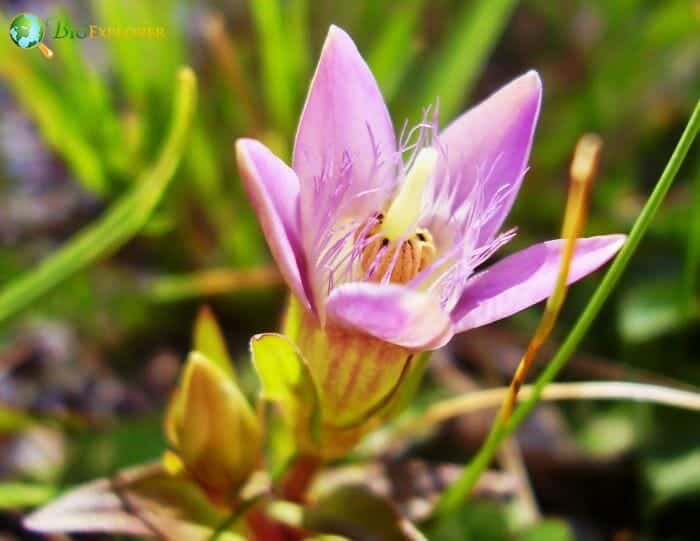
The Rubiaceae[2] flowers are usually epigynous and commonly bisexual. The inflorescence of the flower is a cyme. The solitary flowers are rare. The perianth of the flowers is usually biseriate with distinct calyxWhat is calyx?A collective term for all the sepals of a flower; the lowermost whorl of floral organs (Plural form is calyces). and corolla. Some taxa lack the sepals. The synsepalous calyx often has 4-5 sepals if present. There are often 4-5 imbricateWhat is imbricate?overlap or cause to overlap; in botany terms, scales, sepals, or plates having adjacent edges overlapping; with margins of structures overlapping like shingles on a roof., valvateWhat is valvate?Sepals having adjacent edges abutting rather than overlapping; opening by valves; edges of structures coming together so that the margins touch but won't overlap., or contorted petals in the 1-whorled corolla. In rare cases, the petals are 3 or 8-10. There are typically 4-5 alternipetalous and epipetalous stamens, syncarpousWhat is syncarpous?Flowering having united carpels; Contrast apocarpous. gynoecium with often 2 (sometimes 4) carpels, and a usually inferior ovary. The flowers have nectaries as nectariferous disks atop the ovary. Pollination is via insects and hummingbirds.
The Apocynaceae flowers are regular, bracteateWhat is bracteate?Possessing or bearing bracts., bracteolate, and bisexual. The flowers are usually in a panicle. The flowers are 5-merous with distinct calyx and corolla. The sepals are gamosepalous, regular, imbricate, or open in the bud. The petals are usually contorted, regular, funnel-shaped, or hypocrateriform. The 1-whorled corolla is white, yellow, red, pink, purple, or blue. Most of the Apocynaceae flowers[3] are pollinated by insects. A few are pollinated by birds.
The flowers of Gentianaceae are small or medium-sized, usually bisexual, solitary, or in cymes. Most of the flowers are often simple or compound dichasium. The calyx is polysepalous or gamosepalous with 4-5 (-12) sepals. The corolla comprises 4-5 (-12) petals in 1 whorl. The corolla is funnel-shaped, cyathiform, rotate, or hypocrateriform. The colors are white, pink, purple, or blue. The Gentianales flowers undergo entomophilousWhat is entomophilous?Pollination by insects. Contrast anemophilous (wind-pollination). pollination.
The Loganiaceae flowers are regular, bracteate, bracteolate, and are often bisexual. These flowers are solitary or in inflorescences of cymes or panicles; inflorescences are terminal or axillary. Usually, there are 4-5 sepals and petals in the calyx and corolla, respectively. Both in 1 whorl. The sepals are regular, imbricate, blunt-lobed, or toothed. The flower petals are imbricated in campanulate, hypocrateriform, or rotate-shape. The color is white, yellow, or pink. The floral nectaries are sometimes absent. If present, they are found on the perianth. The pollination of the Loganiaceae flowers[4] is via insects or birds.
The flowers of Gelsemiaceae are regular, medium-sized to large, fragrant or odorless, and bracteate. These flowers are terminal or axillary. The inflorescences are cymes or panicles. The sepals and petals are both 4-5. The sepals are regular, non accrescent, and imbricate. The white, yellow, red, blue, or Lilac corolla lobes are imbricate and funnel-shaped. Most of the flowers are bisexual, mostly heterostylous.
Gentianales Family Differences
Apocynaceae
- The species of Apocynaceae are mostly lianas. Other members are shrubs or herbs. Very few are trees.
- Plants have persistent leaves. These leaves are alternate, opposite, or whorled. The leaves are simple and herbaceous or leathery. Most leaves are exstipulateWhat is exstipulate?Without stipules; Stipule is a small structure of appendage found at the base of some leaf petioles.. The stipules are small (interpetiolar) when present. The lamina is entire and pinnately veined.
- Laticifers are present in the leaves and the stems.
- The flowers are bisexual. They are in a panicle.
- There are 5 imbricate and regular sepals in the calyx and 5 usually contorted petals in the corolla.
- The stamens are 5 in the androecium; epipetalous. The carpels are 2-8 (nearly always 2).
- The ovary is superior or partly inferior. The fruit is a mericarp when schizocarpic. When not schizocarpic, the fruit is a capsule, berry, or drupe.
Gelsemiaceae
- Members of Gelsemiaceae are shrubs, undershrubs, or lianas.
- The plants have opposite or whorled leaves. These leaves are herbaceous, connate or not connate, simple, and petiolate. The plants have interpetiolar or intrapetiolar stipules. The lamina is entire, and the lamina margins are sinuate dentate, or entire.
- The plants are hermaphrodites and nearly always heterostylous. The flowers are in cymes or panicles.
- The sepals are 4-5 in the calyx, blunt-lobed or toothed. In addition, there are 4-5 imbricate and funnel-shaped petals in the corolla.
- The stamens are 4-5; free of one another, and inserted near the base of the corolla tube or midway down the corolla tube. There are 2 carpels in the gynoecium.
- Flowers have a superior ovary, and the fruit is a capsule.
- The fruit has 1-6 seeds. These seeds are endospermic (starchy or bony).
Gentianaceae
- The plants in the family are shrubs or small trees.
- Plants mostly have simple and opposite leaves. Less often, the leaves are alternate or whorled. The leaves have a connate base. The leaves lack stipules. The lamina margins are usually entire.
- The flowers are bisexual and rarely unisexual. The Gentianaceae flowers are usually simple or compound dichasium. The flowers are solitary or aggregated in cymes.
- There are 4-5 (-12) entire, lobulate, or blunt-lobed sepals in the calyx and 4-5 (-12) commonly contorted petals in the corolla.
- The stamens are also 4-5 (-12), adnate to the tube, and are usually free of one another. The gynoecium is 2-carpelled.
- Flowers have a superior ovary. The fruit is usually a capsule and rarely a berry.
- The seeds are often copiously endospermic (oily).
Loganiaceae
- Members of the family are herbs, shrubs, or undershrubs[5].
- The leaves of the plants are well developed or much reduced. The leaves of the plants are simple, opposite, connate or not connate, and petiolate or sessile. The lamina is entire. The leaves are almost stipulate or exstipulate. But the lateral lines connect the bases of the opposing leaf.
- The plants are usually hermaphrodites. Other flowers are unisexual. The flowers are solitary or in inflorescences of cymes or panicles.
- There are usually 4-5 regular, imbricate, blunt-lobed, or toothed sepals in the calyx and 4-5 regular and imbricate petals in the corolla.
- The stamens are also 4-5, epipetalous, and free of one another. The gynoecium is 2-carpelled.
- The ovary of the flowers is superior, and the fruit is a mericarp when schizocarpic and a capsule if not schizocarpic.
- The fruit is 1-100 seeded. The seeds are endospermic.
Rubiaceae
- Members of Rubiaceae are mostly shrubs. Other species are trees, lianas, or herbs[6].
- The leaves of the plants are nearly always opposite and decussate. Other plants have whorled. The Rubiaceae leaves are simple, herbaceous or leathery, connate or not, petiolate or sessile, and epulvinate. The lamina is entire, and the lamina margins are entire or serrate. The leaves usually have interpetiolar stipules and typically have colleters.
- Plants are usually hermaphrodites. The flowers are aggregated in cymes, panicles, verticils, or heads. Other flowers are solitary.
- The perianth is petaline. If the calyx is present, it consists of 4 or 5 sepals in 1 whorl. The corolla lobes are 3-10 in 1 whorl.
- The androecium consists of 4 or 5 stamens, adnate to the corolla tube or attached at its very base. The gynoecium is syncarpous with 2-9 carpels.
- Most flowers have an inferior ovary. Only Gaertnera and Pagamea are superior. The fruit is mericarp if schizocarpic. When non-schizocarpic, the fruit is a berry, a capsule, or a drupe.
- The fruit is 1-30 seeded. The seeds are usually endospermic. The endosperm is oily.
Gentianales Example Species
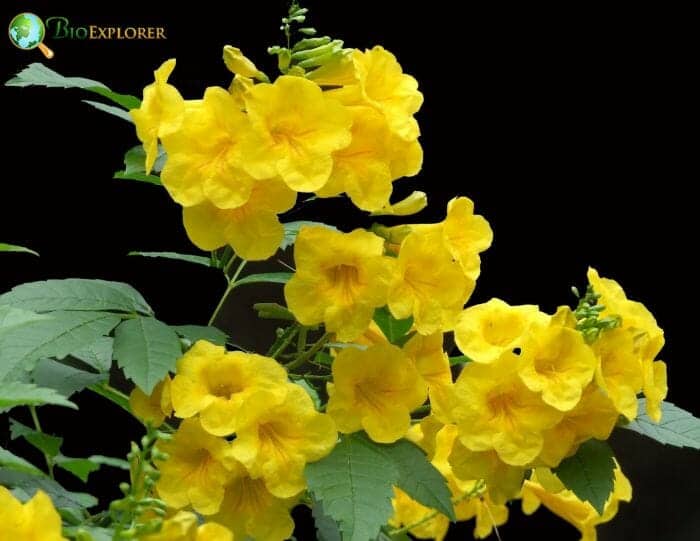
Most Gentianales species are used in traditional medicine. Other species are used as ornamentals. Further, there are members of Gentianales that are economically important. The plants below are the example species under the order Gentianales.
- Dogbane – All parts of the plant are toxic. However, the hardened sap is used for chewing gum, and the Amerindians use berries and roots for traditional medicine. The very sturdy bast fibers are also used by the aboriginal people for cordage.
- Brazilian Jasmine – The Brazilian jasmine is a tropical vine commonly used as a houseplant.
- Carolina jessamine – Carolina jessamine’s flowers, roots, and leaves are toxic. However, this plant is used as ornamental because of its glossy leaves and attractive blooms.
- Swamp jessamine – Swamp jessamine is highly toxic. But, when used correctly, fresh rhizomes and roots are used in medicine.
- Great yellow gentian – The western herb G. lutea is medicinal because of its physiological and pharmacological effects. It is also used to flavor herbal bitters and aperitifs. Also, the plants have an ornamental value.
- Bottle gentian – The bottle gentian plant has ornamental value.
- Rosy periwinkle[7] – The rosy periwinkle is a popular ornamental plant in East Africa. It is also used in traditional medicine.
- Bush rope – The tree’s bark is the source of Curare, which has several applications in modern medicine.
- Clearing-nut tree – It is an important medicinal plant. Its seeds have many medicinal uses.
- Arabic coffee – The seeds of Arabic coffee produce the famous beverage coffee. It is a houseplant in temperate climates. Arabic coffee plant also has medicinal value. In addition, the plant’s seed oil is commonly used in cosmetic formulations.


